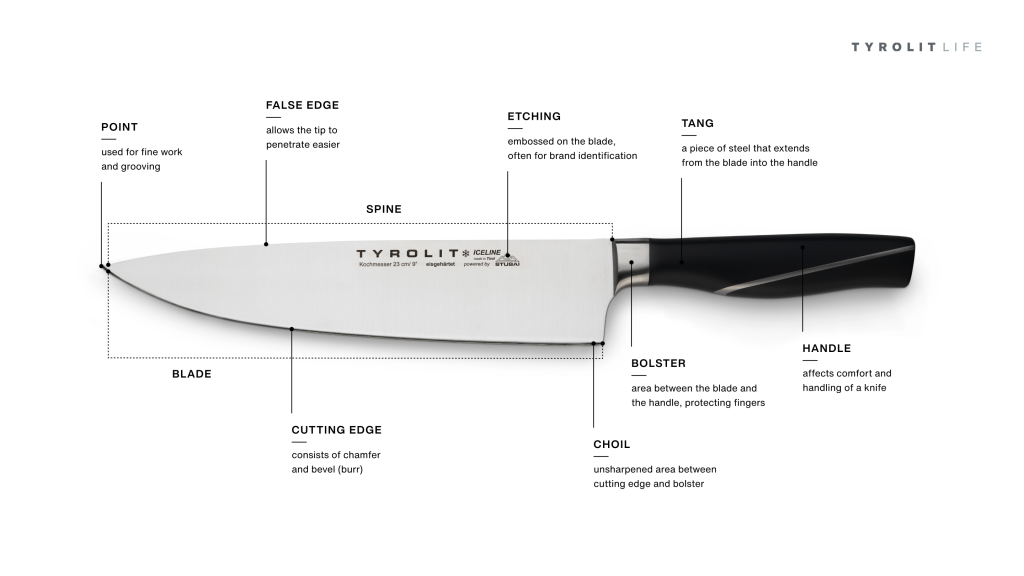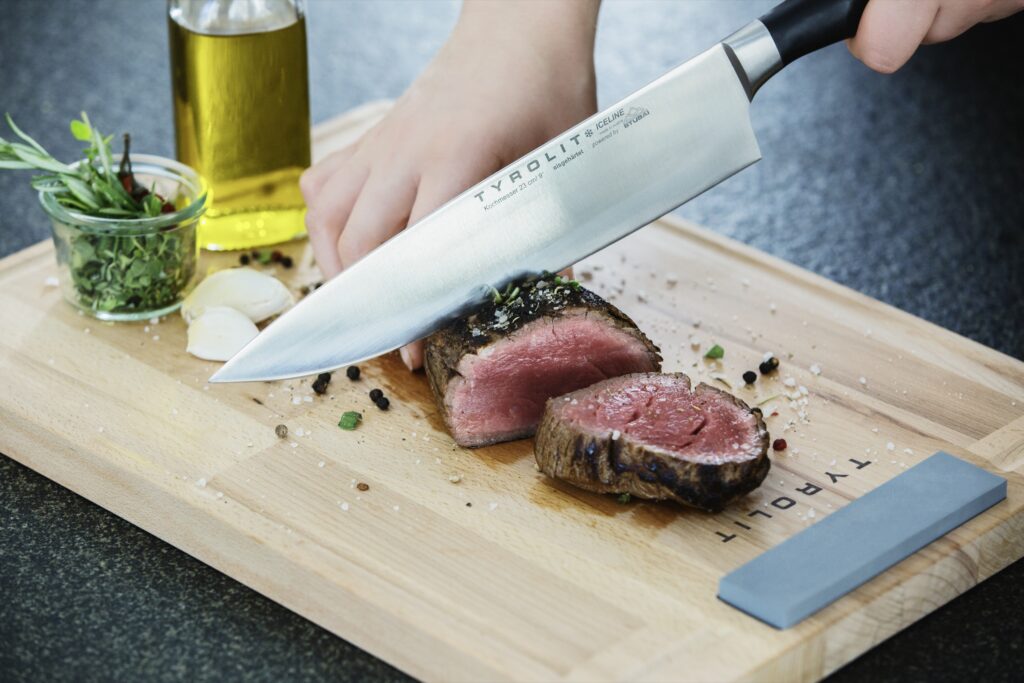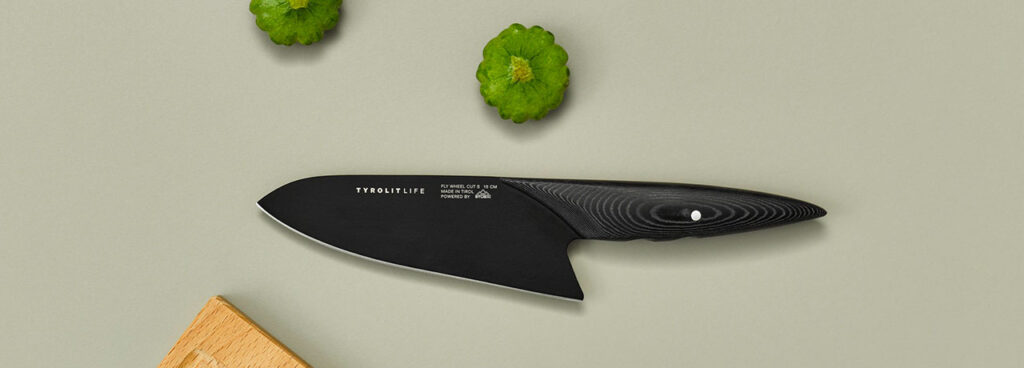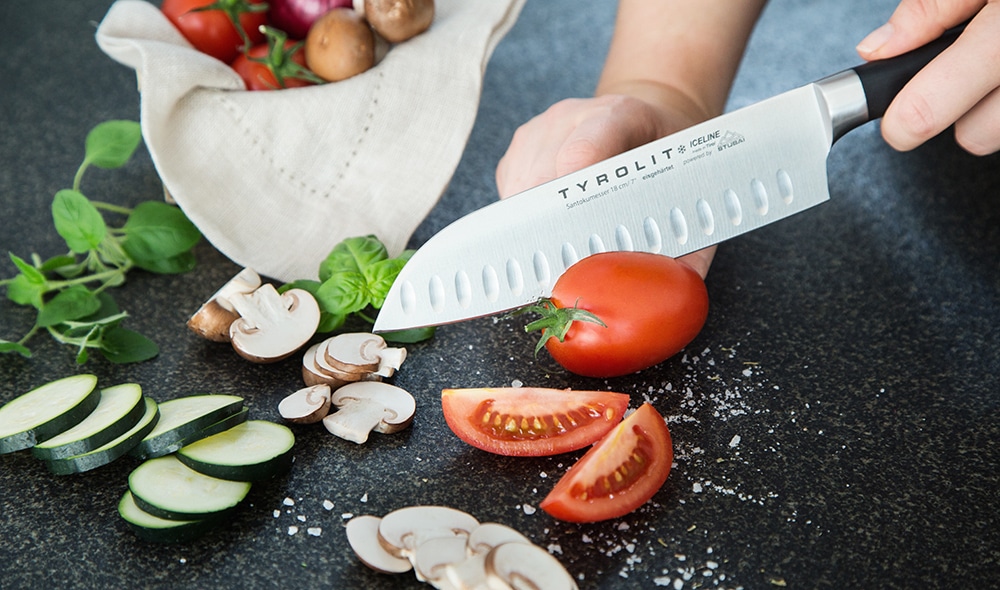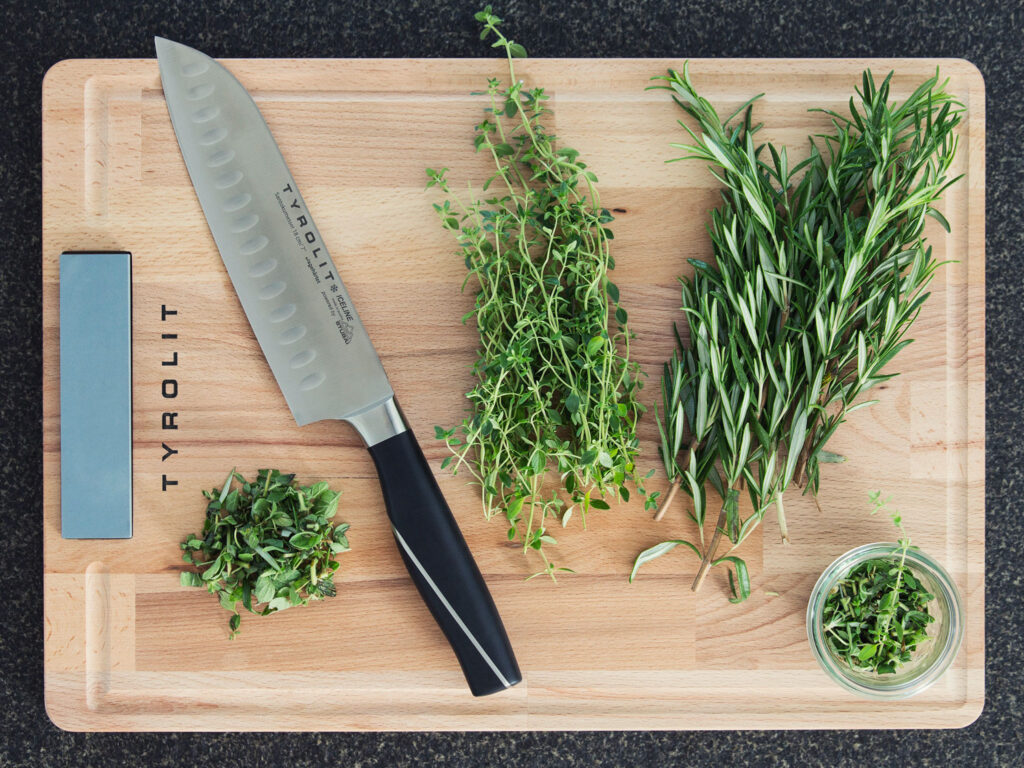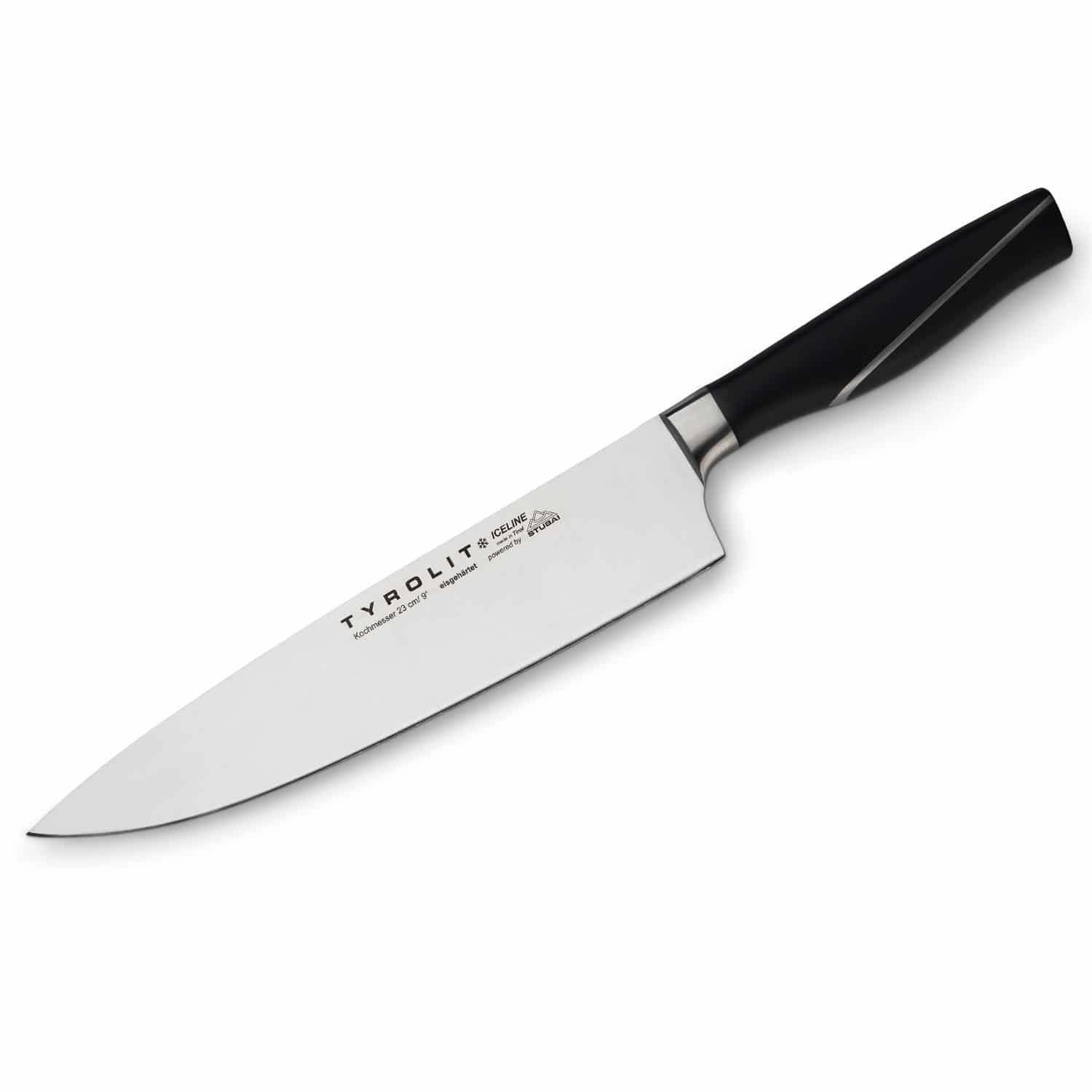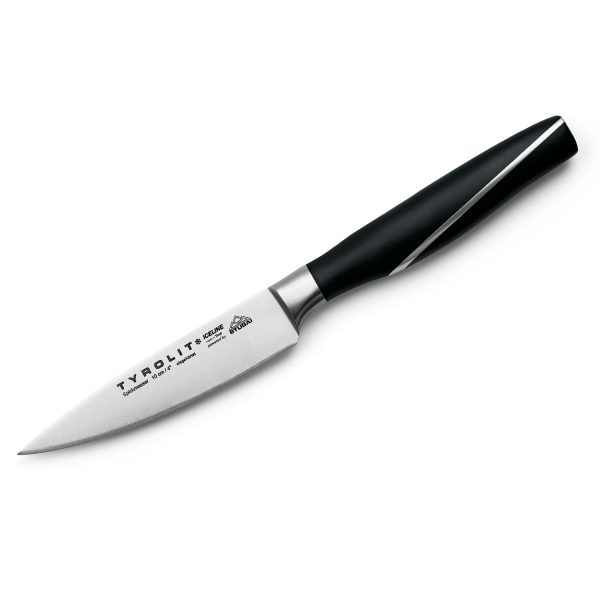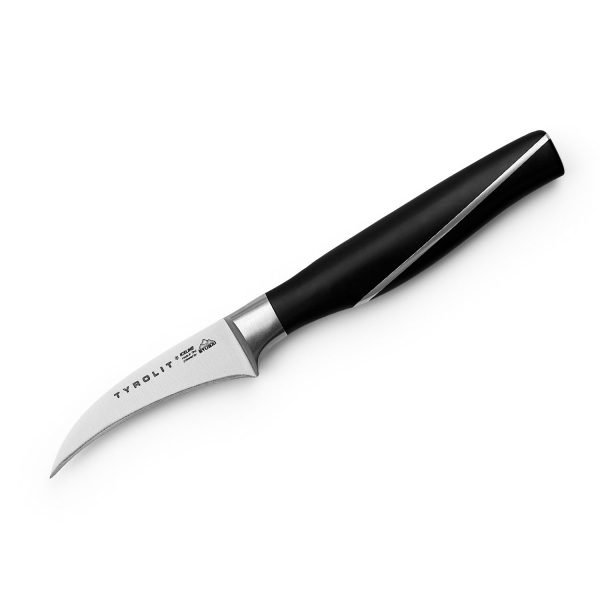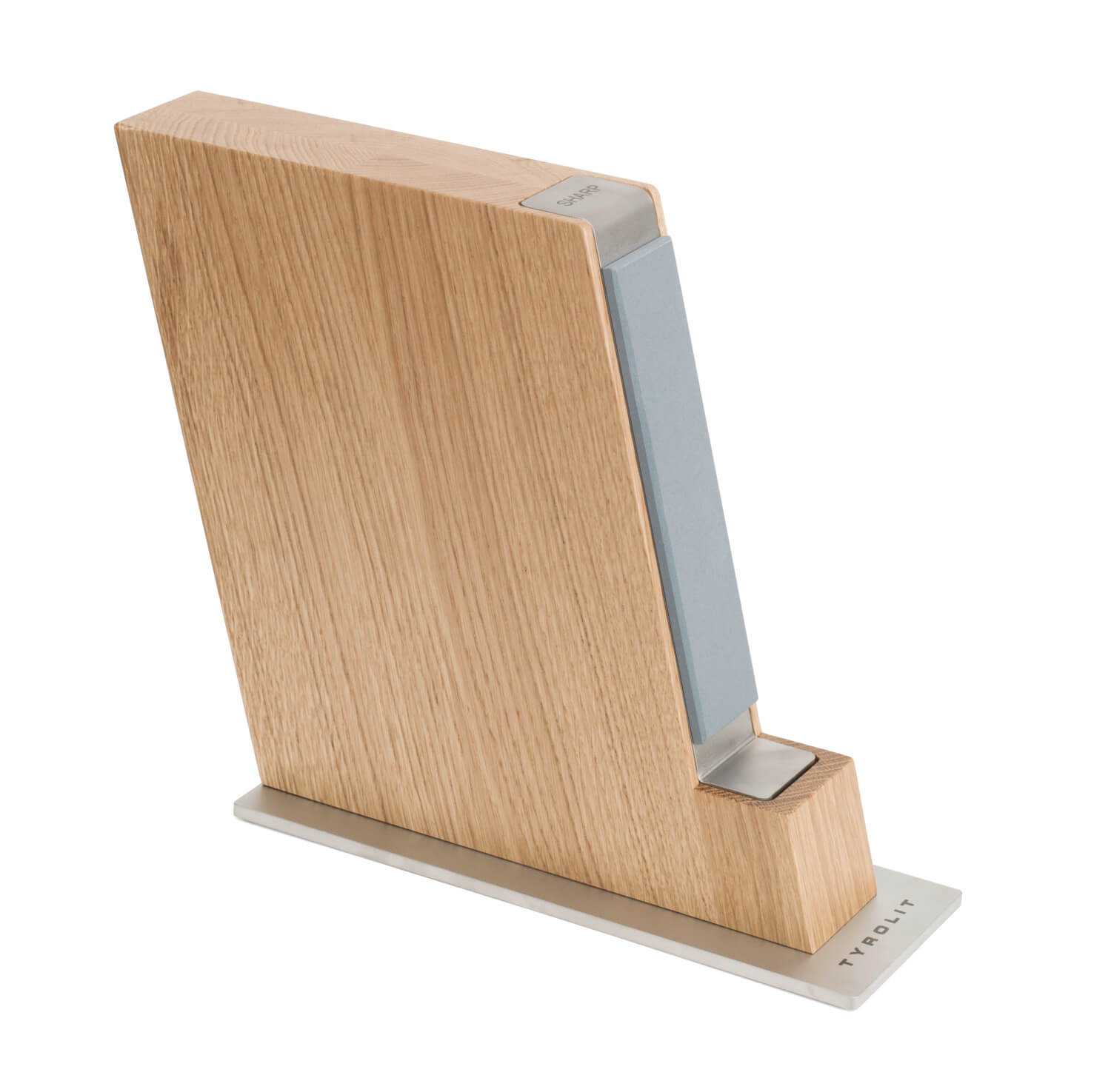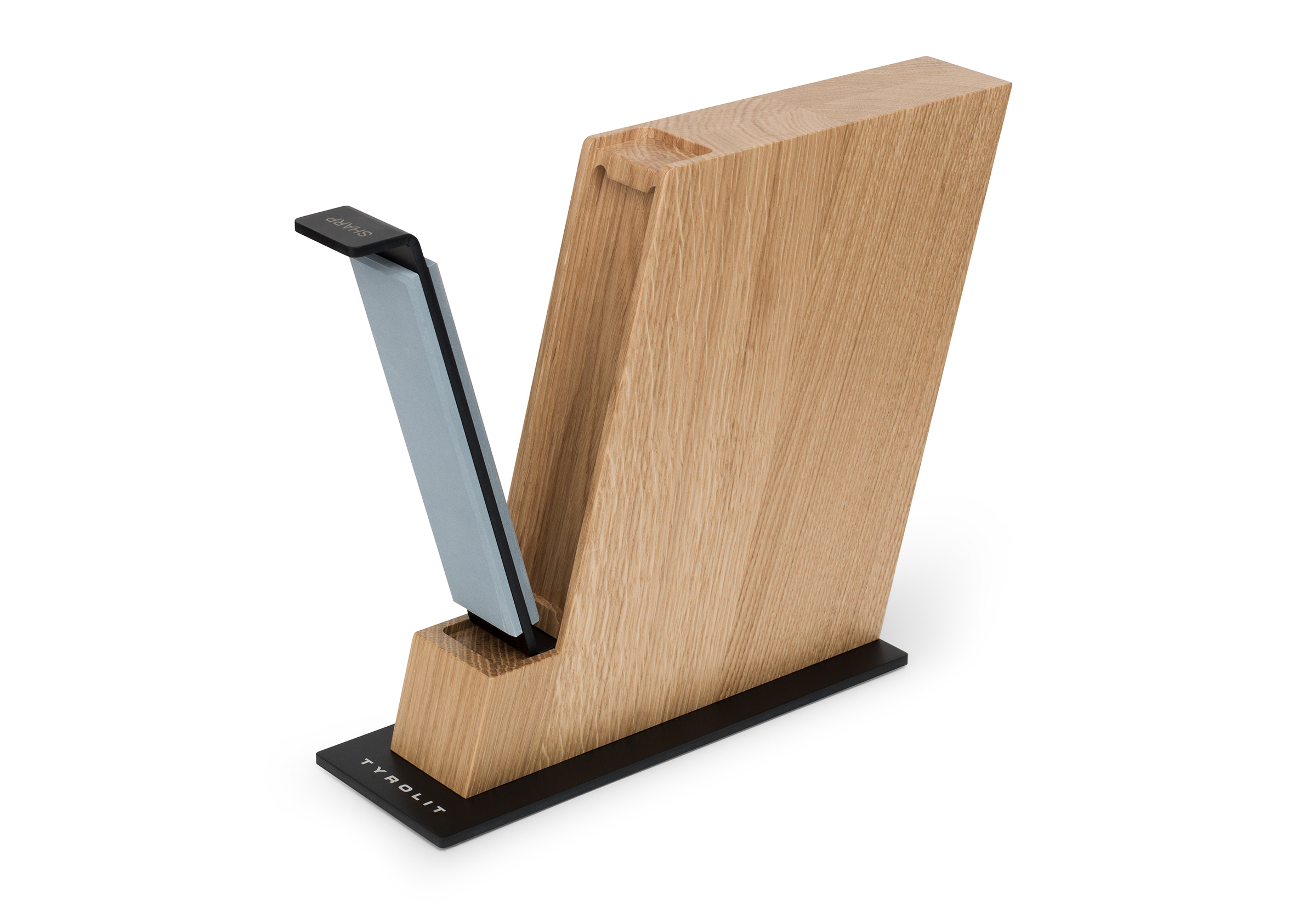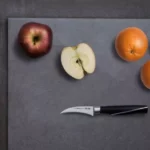What is a vegetable knife and how is it used?
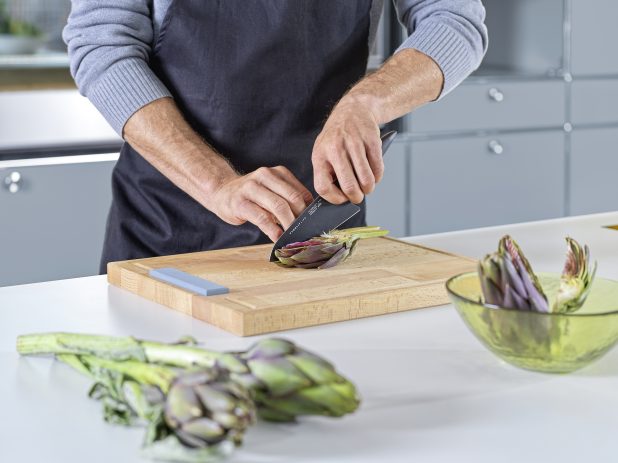
The vegetable knife is a specialized kitchen tool mainly used for cutting, peeling and preparing vegetables and fruits. It is characterized by its sharp blade and mostly compact size.
Origin of the vegetable knife
In the following section you will find some basic information about the development of the vegetable knife – as we use it today.
Historical Background of the Vegetable Knife
The history of the knife, in this case the vegetable knife, is a fascinating historical development. Its origins go far back in the history of mankind. Originally, simple cutting tools made of stone or wood were used to cut plants and vegetables.
Over time, these tools were further perfected. Particularly in antiquity, in cultures such as the Roman and Egyptian, precursors to today’s vegetable knife were already in use
The development of steel as a material marked a significant advancement in the sharpness and durability of these knives. During the Middle Ages, the differentiation of kitchen knives began, including the vegetable knife, leading to specialized tools for various tasks.
7 Benefits of a Small Santoku Knife
A small Santoku knife can easily outdo its big brother in terms of versatility. In this article, you will learn about the advantages of these knives.
Traditional use in different cultures
The vegetable knife has become an indispensable kitchen tool in various parts of the world. Vegetable knives have a long tradition in Asia, especially in Japan. Here they are often seen as an integral part of the culinary art.
The Japanese Nakiri knife, for example, is specially designed for cutting vegetables and is used for elaborate presentations and precise cutting. The vegetable knife is also widely used in European kitchens and is used for cutting vegetables, peeling fruit and many other tasks.
In the Mediterranean region, such as Italy and Greece, vegetable knives with handles made of olive wood are particularly popular and reflect regional culinary traditions. The variety of cultural uses and developments of the vegetable knife shows how this tool has adapted to different needs and cooking styles throughout history.
Structure of the vegetable knife
In the following sections, we would like to inform you a little more about the individual components of the vegetable knife.
Blade Material
In the selection of blade materials for vegetable knives, Damascus steel and stainless steel play key roles. Damascus knives are considered more demanding in terms of care and maintenance. Stainless steel knives are widely popular and renowned for their resistance to rust
Tyrolit Life, the renowned manufacturer of knives and grinding tools in Tyrol, relies on high-quality stainless steel blades for its vegetable knives. These blades are durable, easy to clean and retain their sharpness for a long time.
Blade Shapes: Mid-point and Serrated Edge
The smooth, straight and very sharp blade is ideal for cutting and peeling fruit and vegetables. The back of the blade is slightly curved and narrow. For tomatoes, for example, there is also the special tomato knife, which with its special cut in wave shape facilitates penetration into the skin of the very soft fruit.
Knife shapes in and outside the kitchen: What blade shapes are there?
Depending on the intended use, there are a wide variety of blade shapes. In this article, we provide an overview of the most important of these.
Handle materials: from metal to wood to high-quality plastic
The choice of handle material for knives is of great importance as the handle has a significant impact on handling and comfort when cutting. In the world of vegetable knives, the variety of this part of the knife ranges from metal to wood to high-quality plastic.
Metal handles are known for their durability and modern aesthetics, while wooden handles offer a warm, natural look and feel comfortable in the hand. High-quality plastic offers excellent durability and hygiene, which is particularly appreciated in professional kitchens.
Renowned knife specialist Tyrolit Life offers knives with ergonomically shaped plastic handles. The handle shells are prefabricated from Micarta and milled three-dimensionally on a multi-axis CNC machine. The handles are given their ergonomic shape by careful grinding and polishing by hand before they are pressed airtight with the steel and undetachably glued. These handles ensure good and safe handling and convince with their appealing design and pleasant feel.
Areas of application of the vegetable knife
In the following, we would like to go into a little more detail about what you can actually use a good vegetable knife for.
General use in the kitchen
The vegetable knife is an important kitchen tool, essential in nearly every aspect of the kitchen. Whether it’s for preparing salads, chopping herbs, or portioning vegetables for soups and stews, the vegetable knife finds use in a multitude of daily cooking tasks. Practically, it enables chefs to quickly and efficiently process food.
Real precision when cutting vegetables
One of the outstanding features of the vegetable knife is its ability to cut vegetables precisely and evenly. This is especially important when fine Julienne strips, Brunoise cubes or wafer-thin slices are needed for dishes such as ratatouille or vegetable gratin.
With a vegetable knife, you can effortlessly accomplish these tasks while maintaining the integrity of the pieces of vegetables to enhance the look and texture of the dishes.
Peeling fruit and vegetables
The peeling knife is a special variant of the vegetable knife. This is where the sharp blade and precise control come into play. When peeling apples, potatoes, or cucumbers, it ensures that only the thinnest layer is removed to minimize waste and preserve flavor.
Differences between vegetable knives and other kitchen knives
The differences between a vegetable knife and other kitchen knives are crucial for their respective uses. A utility knife has a wider blade and can be used in a more versatile way, but may not be as suitable for fine vegetable work as the vegetable knife.
There is also a significant difference in blade length, with the vegetable knife often being shorter than a chef’s or utility knife. These differences underline the importance of a specialized vegetable knife in the kitchen.
A quick word about the tomato knife
A special case among vegetable knives is the tomato knife. It features a serrated blade designed specifically for cutting tomatoes. It makes it possible to effortlessly penetrate the delicate skin of tomatoes without crushing the flesh.
This specialized knife is a perfect companion for preparing tomatoes, salads, sandwiches and other dishes that require precise and clean slices of tomato. It is an example of how a specialized vegetable knife can increase efficiency in the kitchen.
By the way: The so-called paring knife is another special form of the vegetable knife. It features a downward curved, narrow blade, making it especially easy to peel fruits and vegetables. Additionally, the so-called utility knife is frequently used for peeling and cutting vegetables.
Santoku Knife Comparison
The santoku knife is a Japanese all-purpose knife that is often compared with vegetable knives. It features a wider blade than a typical vegetable knife, thereby offering greater versatility in use. While a vegetable knife is primarily focused on tasks involving vegetables, a santoku knife can also be used for cutting meat and fish
The wider blade makes it easier to pick up chopped food and transfer it to the pan or pot. However, it is important to note that a santoku knife is not as specialized as a vegetable knife and may not provide the same precision in fine vegetable work. The choice between these two knives depends on your individual cooking needs and preferences.
Maintaining Your Vegetable Knife
Knives at a Glance: What You Should Know About Types, Materials, and Care
Knives have always been central tools in our everyday lives, but also for special applications. In this post, we’ll take a look at what you need to know about knives – from their history to their manufacture and care.
Cleaning Recommendations and Dishwasher
Even if many vegetable knives are made of high-quality, stainless material, hand cleaning after each use is strongly recommended. The aggressive chemistry and hard water used in dishwashers can damage not only the blade but also the handle.
To ensure that your vegetable knife retains its sharpness and quality for a long time, you should carefully clean it by hand after use. To do this, use warm water and mild detergent and dry it immediately to avoid traces of water. Always remember: care for and clean knives!
Storage tips: knife block and magnetic bar
For storing your vegetable knife, magnetic strips or classic knife blocks (into which the knives are inserted into slots) are appropriate options. Tyrolit Life provides an especially secure storage solution for your knives with its magnetic knife blocks, which are also equipped with a knife sharpener. Additionally, they serve as an aesthetic highlight in your kitchen.
Sharpening the blade
When it comes to sharpening your vegetable knife, quality grindstones are essential. Tyrolit Life, the renowned Tyrolean manufacturer of grinding tools and knives, offers high-quality knife sharpeners that are perfect for sharpening vegetable knives. The company's products are known for their durability and their ability to ensure an even and sharp blade, which significantly extends the life of your knife.
A vegetable knife deserves the best care and maintenance to maintain its quality and functionality. With the right sharpening tools and techniques, such as those offered by Tyrolit Life, you can ensure that your vegetable knife will remain a reliable companion in your kitchen for many years to come.
Types of Whetstones – Materials, Shapes, and Uses
Choosing the right whetstone or sharpening stone is anything but trivial: it is only by regularly sharpening knives that they retain their sharpness. In order to provide an overview here, we will introduce you to different types of grinding stones in this article. In addition, we will show you how we at Tyrolit, as long-standing abrasive experts, have further developed the classic sharpening stone into our innovative knife sharpeners. Read more!
What is the cost of a vegetable knife?
Of course, the cost of a vegetable knife can vary greatly. Price factors include the material used, the manufacturer and the overall quality of the knife. Knives made of damask steel, for example, tend to be more expensive than knives made of stainless steel.
Overall, it can be said that vegetable knives range in price from about 30 to 150 euros, although of course there are outliers upwards. At Tyrolit Life, for example, you can buy high-quality vegetable knives and spend between 40 and 120 euros.
Conclusion
We note that the vegetable knife is an indispensable kitchen helper in the modern kitchen. It stands out for its precision and versatility. Choosing the right vegetable knife should be done carefully, taking into account criteria such as material, blade shape and handle. With proper care and maintenance, the vegetable knife remains a long-term addition to your kitchen.
FAQs
Which knife should be used for cutting vegetables?
Which 3 knives do you need?
Which knives do you use for what?
Which knife is used for meat and vegetables?
Ideal blade length for a vegetable knife
Dishwasher resistance of vegetable knives
Differences between Japanese and Western vegetable knives
Frequency of Sharpening Vegetable Knives
Recommended Additions for a Vegetable Knife Set


